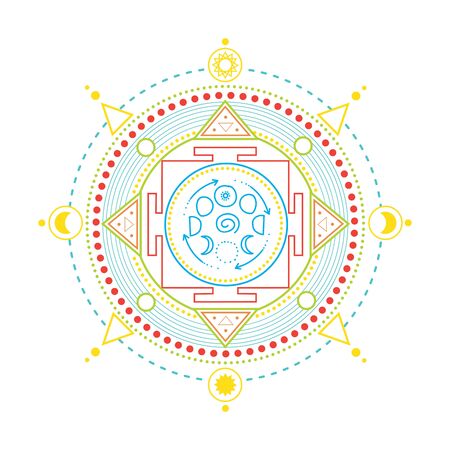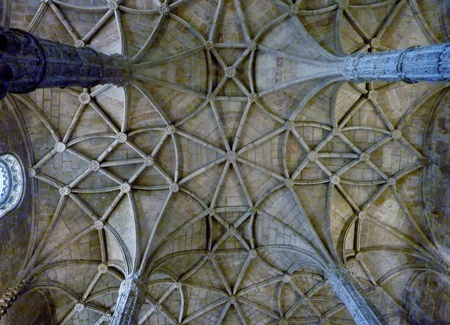Introduction: Echoes of the Monastic Past
The enduring legacy of medieval British monasteries is woven deep into the very fabric of the nation’s landscape. These storied sanctuaries, with their soaring arches and cloistered courtyards, were more than religious retreats—they were visionary centres shaping both the physical and spiritual realms. As you wander the mist-laden ruins or stroll through thriving abbey gardens, it becomes clear that these monastic foundations set in motion centuries of design sensibility and tradition. Their influence extends beyond stone and mortar, echoing in the symmetry of sacred geometry and the tranquil orderliness of cultivated grounds. In exploring these ancient spaces, we uncover not only architectural feats but also a profound dialogue between faith, nature, and creative expression that continues to inform British heritage today.
2. Monastic Life and the Heart of the Community
To truly appreciate the legacy of medieval British monasteries, one must step into the pulse of monastic life and recognise its profound integration with local society. Far beyond their spiritual mandate, abbeys and priories functioned as vibrant centres that shaped daily existence and community identity across Britain.
Daily Rhythms: The Benedictine Rule in Practice
The daily routine within these sacred spaces was meticulously structured, following the Benedictine Rule—a framework governing prayer, work, and contemplation. This balance between ora et labora (prayer and work) not only moulded individual monks but also set a disciplined rhythm for entire communities.
| Time | Activity | Purpose |
|---|---|---|
| Matins & Lauds (early morning) | Choral prayers & chants | Spiritual awakening |
| Prime to Sext (morning to midday) | Scriptorium, study, manual labour | Intellectual and physical productivity |
| Nones (afternoon) | Shared meal, reflection | Community bonding & nourishment |
| Vespers & Compline (evening) | Evening prayers, silence | Contemplation & closure of day |
The Abbey as a Social Anchor
Monasteries were not isolated retreats; they served as lifelines for their surrounding villages and towns. Acting as hospitals, schools, guesthouses, and granaries, these institutions provided essential services that bound them to every layer of local life. Their influence extended through charity, education, and economic activity—transforming even remote regions into thriving hubs of culture and welfare.
Sacred Geometry in Everyday Structures
The spatial arrangement of monastic buildings was no accident. Inspired by sacred geometry, abbey layouts fostered harmony between the spiritual and the communal. Cloisters opened onto lush gardens—spaces for both meditation and medicinal herb cultivation—while refectories echoed with shared meals beneath vaulted ceilings designed to uplift both spirit and sense of place.
The Lasting Influence on British Society
The far-reaching impact of these monastic communities can still be traced in modern Britain. From place names rooted in ecclesiastical history to remnants of monastic hospitality in today’s public institutions, the echoes of abbeys and priories resonate through centuries—reminding us that sacred geometry was as much about shaping lives as it was about designing spaces.

3. Sacred Geometry in Stone and Space
Step into any medieval British monastery, and you will find yourself enveloped by more than mere stone and timber. The very bones of these spaces are shaped by sacred geometry—a silent language that guided the hands of their builders. At its heart, this geometry is not just about numbers or shapes, but about proportion, harmony, and a profound sense of spiritual resonance. The monastic architects drew upon ancient principles such as the Golden Ratio and the symbolism of circles, squares, and triangles to create spaces that felt divinely ordered. Cloisters were laid out with deliberate symmetry, echoing the celestial order believed to underpin all creation. Windows and doorways were placed with mathematical precision, allowing light to pour in at particular moments, casting patterns that marked the passage of time or illuminated significant altars on feast days.
This intricate planning extended even to the orientation of entire complexes. Many monasteries were aligned east-west, symbolising resurrection and renewal as dawn’s light touched the sanctuary first. These choices were never arbitrary; each axis, archway, and apse was intended to foster contemplation and draw the observer into a deeper communion with the sacred. Through geometry, stone became a vessel for spiritual insight—a physical expression of divine truths that continues to inspire awe centuries later.
4. Ornamentation and Spiritual Symbolism
The decorative arts within medieval British monasteries were far from mere embellishment—they were profound carriers of spiritual meaning, carefully crafted to guide the mind towards contemplation and reverence. The interplay between ornamentation and sacred geometry is particularly evident in how motifs, stained glass, and intricate carvings were integrated into monastic architecture.
Analysing Decorative Motifs
Medieval artisans drew inspiration from both nature and geometry, weaving recurring patterns such as quatrefoils, trefoils, and interlacing vines into stonework and woodwork. These motifs resonated with a symbolic language easily deciphered by the medieval British observer: the circle represented eternity, the triangle hinted at the Holy Trinity, and floral designs signified rebirth and divine creation.
Symbolic Motifs in Monastic Ornamentation
| Motif | Visual Form | Symbolic Meaning |
|---|---|---|
| Quatrefoil | Four-lobed shape | Harmony, four evangelists |
| Rose Window | Circular stained glass pattern | Eternity, unity of faith |
| Trellis Vine | Interwoven plant patterns | Growth, spiritual nourishment |
| Chevron | Zigzag carving or moulding | Protection, divine guidance |
| Knotwork | Interlaced ribbons or bands | Infinity, interconnectedness of creation |
The Luminosity of Stained Glass Windows
No feature encapsulates the union of beauty and belief quite like the stained glass windows of Britain’s medieval monasteries. Designed to filter coloured light through intricate geometric tracery, these windows transformed sunlight into a kaleidoscope of sacred hues. Biblical stories and saints’ lives unfolded across panes of blue and ruby—a didactic tapestry that illuminated both nave and soul.
Carvings: From Choir Stalls to Capitals
The wooden choir stalls and stone capitals were canvases for master carvers who embedded layers of meaning in every detail. Animals symbolising virtues (such as lions for courage), fantastical creatures warning against sin, and biblical scenes played out beneath the gaze of monks at prayer—each carving was a silent sermon in wood or stone.
A Legacy Etched in Stone and Glass
The visual language developed within these sacred spaces continues to influence British design sensibility today. By decoding these motifs, we gain insight not only into medieval spirituality but also into a uniquely British approach to art—where every detail serves both aesthetic delight and spiritual revelation.
5. From Ruins to the Modern Mind
Echoes of Geometry in Contemporary Britain
The silent majesty of medieval British monasteries lingers not just in their weathered stones, but also in the intricate geometric patterns embedded within their very foundations. Today, these abbey ruins—whether veiled in the morning mist of Yorkshire or standing sentinel by a Cotswold stream—continue to shape the sensibilities of modern British architecture. The sacred geometry once used to elevate spiritual consciousness now subtly informs our sense of place and proportion, urging contemporary designers to create spaces that resonate with both functionality and poetic grace.
Reimagining Heritage Through Design
British architects and urban planners frequently draw inspiration from monastic layouts: cloisters, chapter houses, and nave alignments echoing in public buildings, gardens, and even residential developments. There is a quiet reverence for symmetry, proportion, and flow—a conscious nod to the spatial choreography perfected by medieval masons. In reinterpreting these forms, designers infuse new structures with a sense of continuity, rooting them in the national narrative while responding to the needs of today’s communities.
A Living Dialogue With the Past
The enduring presence of these sacred sites fosters a collective appreciation for geometry as more than mere mathematics; it becomes an expression of cultural identity. When Britons walk through restored abbeys or interact with contemporary spaces inspired by monastic logic, there is a subtle invitation to reflect on heritage—a reminder that these ancient principles still inform how we inhabit and experience space. Thus, the legacy of medieval monasteries and their geometric wisdom remains woven into the fabric of modern British life, shaping not only our built environment but also our shared imagination.

